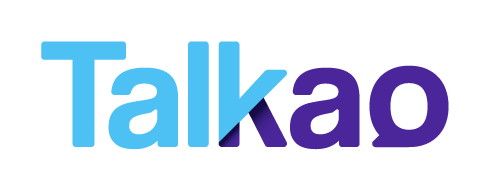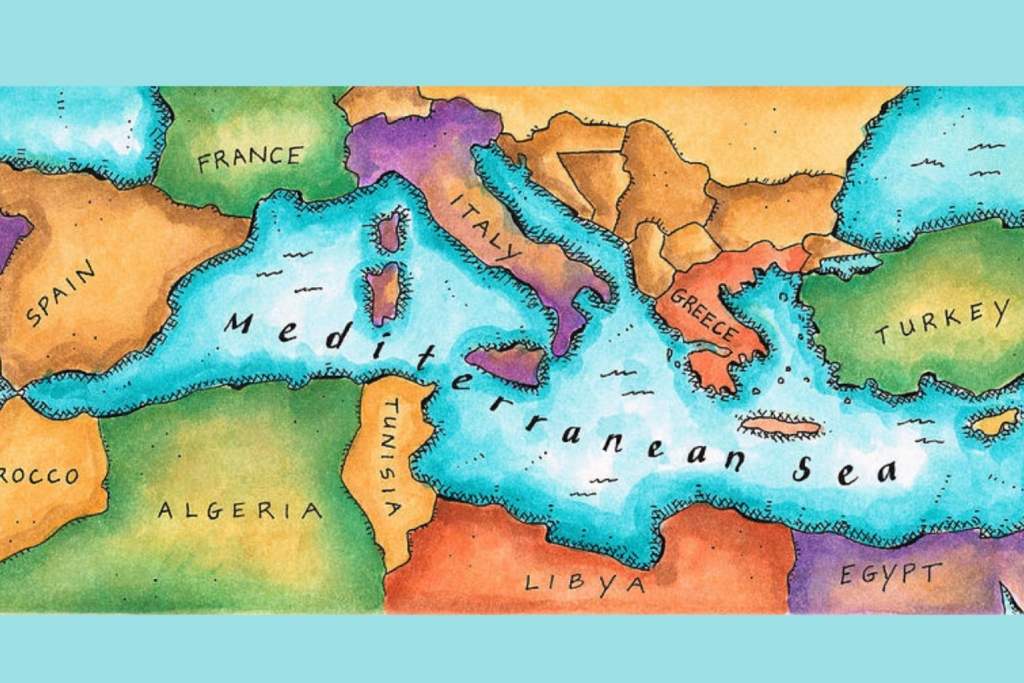Professional training and development are essential in today’s highly competitive world. Standing out in the market, building a strong client base, and expanding your business all depend largely on your level of training. Attracting new clients and improving your services always go hand in hand.
You can spend thousands of euros on advertising and social media marketing. But in the end, what truly boosts your reputation is the quality of the service you offer.
Not long ago, advancing your professional skills meant enrolling in a university and attending in-person classes. But now, you have the opportunity to study from anywhere in the world and in any language—without ever leaving your home.
This brings us to a common question:
Do I really need to learn multiple languages to improve my professional training?
Thanks to Talkao’s powerful translation tools, the answer is no. You can access high-level professional training in any language, without needing to speak it fluently. And here’s how.
Why is professional training so important in today’s market?
There’s an old saying that goes, “No risk, no reward.” In today’s global market, this couldn’t be more true. Now more than ever, professionals have access to markets that were once out of reach—across countries and regions. However, just like you, thousands of other professionals are competing for the same slice of opportunity. Logically, only those who can offer high-quality services at a reasonable cost will truly succeed.
For many, breaking into new markets and attracting more clients seems as simple as posting on social media. Opening a TikTok or Instagram account and flooding it with fun and engaging videos sounds great—and it definitely helps. But in some industries, doing this without solid professional training is like pouring a glass of water into the ocean. And here’s why:
More followers doesn’t mean more clients
Today, two concepts are often confused: online visibility and actual business growth. Building an audience based on the number of social media followers is fleeting and limited in scope. Many social media accounts may achieve viral success, but that doesn’t always translate into revenue.
If you want to grow sustainably and long-term, you must focus on what unique and valuable service you’re offering to your potential clients.
Even with the best marketing agency in the world behind you, without real, valuable services, your success won’t last. That’s why, before investing in marketing and expansion, you need to build a strong foundation through meaningful professional training.
Otherwise, you might end up with countless likes and hearts on your socials—but none of that will translate into money in your bank account. And this is where many service providers forget a key truth:
To succeed, you must stand out—and offer something truly valuable.
Which leads us to one of the most common questions:
Why invest in professional training if you already offer quality services?
This is a common and perfectly natural question when considering further professional training. Many professionals mistakenly believe they’ve reached the peak of their expertise—that they’ve mastered their field to the point where additional learning is unnecessary. Others feel their client base is large and loyal enough that expanding it isn’t a priority.
One of the most frequent mindsets in these cases is:
“I’m doing fine. I don’t need to grow.”
There’s nothing wrong with stability—in fact, it’s the goal for many. Plenty of professionals manage to dominate small, local markets that generate just enough income to meet their personal or financial goals. Some operate in areas where they are the only service provider, or where competitors don’t measure up. Others are simply content earning enough to cover expenses and maintain a comfortable plateau in their growth.
However, in today’s fast-paced world, that kind of stability is fragile and difficult to maintain. Without updated, high-quality professional training, your current standing could quickly become vulnerable. Any new competitor could challenge your position, offering better services or more competitive pricing. That’s why increasing the quality and diversity of your services is key to long-term survival.
So before you decide you’re doing fine and don’t need to grow professionally, ask yourself:
- Could I compete with new players in my market?
- Or would I just watch as my client base slowly shrinks?
Losing ground in “solid” markets
Let’s say you’re the only lawyer, accountant, or [insert your profession here] in a small town. Your services are limited to the local population, which has no other real options. This mindset may have worked perfectly 20 or 30 years ago, when markets were geographically confined and whoever conquered a space basically owned it.
That applied not just at the town level, but even to national or regional markets. However, globalization has drastically changed the rules. New players can now enter your market—offering innovative, more relevant services often at lower costs. They may have different knowledge, modern approaches, or simply a better offer.
And often, that’s all it takes for them to win over a significant portion of your existing clientele—just by being different.
Losing credibility with your existing clients
Let’s go back to the previous example. You’re one of the few, or the only, service provider in your area. Your competitors are limited, non-existent, or simply not on your level—so you’ve been able to dominate the market and build a reputation based on what’s currently available.
But what happens when a new competitor arrives with a broader, more modern service offer? Suddenly, your clients might start questioning your expertise and the benefits you offer. You could lose clients to someone whose knowledge is simply more updated and aligned with today’s needs.
In this scenario, professional training becomes the key to staying relevant.
Keeping your skills aligned with market demands
Thinking of the market as static is the fastest way to lose relevance. Client needs are constantly evolving, and in almost every industry, knowledge has an expiration date. Of course, there are foundational concepts that remain useful long-term or evolve more slowly.
Still, in most cases, what you know today might be outdated tomorrow. That’s why staying current with ongoing professional training is essential for staying competitive. Learning new tools, techniques, and perspectives not only protects your position—it adds continuous and sustainable value to your services over time.
Now that we’ve clearly established what could happen if you don’t continue developing professionally, let’s talk about how to counter these risks. The obvious answer is to invest in further training and improve your offer. But here’s the next big question:
Should your professional training be limited to your native language?
Coming up, we’ll show you why expanding your language options could be the key to standing out in a crowded market.

Professional training in other languages: A key advantage for business growth
Expanding your professional training is a fundamental strategy to retain your current clients. As we’ve discussed, it helps you stay competitive, adapt to new trends, and prepare for the future. It also protects your position from being overtaken by emerging professionals entering your market.
But while keeping up helps maintain the status quo, what if you want to lead, not just survive? What’s the smartest way to stay ahead of your competitors and build long-term market leadership?
You guessed it—invest in professional training in other languages. But why exactly does this make such a difference? Let’s explore the key reasons:
Access knowledge your local competitors don’t have
Chances are, your competitors also understand the value of professional development. In fact, it’s very likely that your strongest competitors today could be sitting next to you in the same courses and training programs tomorrow. So how do you stand out if you’re all learning the same thing?
The answer is simple but powerful: go where others aren’t looking. That means learning from sources in other languages. While training in your native language is valuable, learning in another language opens the door to new ideas, fresh perspectives, and deeper knowledge. In a competitive market, being different is your greatest asset—it’s what creates a strategic advantage.
Stay ahead with more updated, global knowledge
Here’s an unavoidable truth: some markets are more advanced than others in certain industries. The service you offer might already be more developed in other regions, and that’s okay—it’s not a weakness, it’s an opportunity.
In many cases, these regions lead the way because they were early adopters of a service, they invest more in R&D, or their higher competition levels push constant innovation. Whatever the reason, you can learn a lot from those who are ahead.
But here’s the catch—language is often the barrier. New research, tools, and professional practices are rarely translated, or at least not quickly enough to keep pace. That means by the time it’s available in your language, the knowledge is already widespread and no longer cutting-edge.
So, if you want to lead in your own market, you need to learn from the source—where that knowledge is being created. Language shouldn’t be a limitation to your growth.
Be the first to adopt new trends and tools
The regions with the most advanced knowledge are also the ones setting the global trends. They’re the first to develop new tools, techniques, and approaches. By the time these innovations are translated into your language and make their way to your local training programs, they’ve already become mainstream.
That’s why accessing knowledge early gives you a critical edge. Learning what’s coming before your competitors does allows you to position yourself as a market leader. You don’t just follow trends—you set them. And that’s one of the most powerful reasons to pursue professional training in other languages.
Sounds great, right? But here’s the inevitable question:
How can I access professional training in another language if I don’t speak it?
Good news—there’s an efficient, affordable, and effective solution that can help you overcome this barrier and take your business to the next level. Let’s discover how you can unlock your professional growth without having to learn a new language from scratch.

Talkao Tools: Your best ally for professional training in any language
By now, it’s clear that training in other languages gives you a powerful edge over your competitors. It not only protects your current market position but also helps you stay ahead of the curve and access knowledge before others do. This advantage strengthens your business, positions you as an industry leader, and even opens the door to new markets.
But while it sounds like an obvious path to growth, professional training in a foreign language isn’t always easy. Sure, there are thousands of affordable and accessible online courses—but the biggest challenge remains: the language barrier.
You might think you need to be fluent in another language to take part in international professional training. But the truth is, that’s no longer necessary—not with Talkao tools on your side. Here’s how they help you overcome every language obstacle in your professional development journey:
Listen to any training in any language—in real time
Thanks to Talkao’s AI-powered voice translation, you can listen to any class or lecture in over 125 languages. And it’s not just limited to pre-recorded videos—real-time translation means you can follow along during live sessions as well.
Whether you’re attending a webinar, virtual workshop, or live course, you’ll understand every word as if it were in your native language.
Speak and interact with instructors and classmates
Talkao doesn’t just translate what you hear—it helps you fully engage in your training. With its AI text translation feature, you can translate chats, Q&As, evaluations, and live interactions in seconds.
Want to speak up? No problem. Talkao Translate lets you speak in your own language and converts it into the language of the course in real time. The result is a natural, fluid conversation—no awkward pauses, no language gaps.
Read any text, document, or multimedia resource
One of the most valuable parts of professional training is the access to study materials—books, guides, articles, and multimedia resources. But reading them in a foreign language can be a major challenge.
Talkao makes it easy. With its AI text translation, you can translate entire documents or paragraphs in seconds—with speed, accuracy, and clarity. You don’t even need to type out the original content manually.
Using the image translation feature, you can simply scan visuals—slides, PDFs, brochures, posters, and menus in any language—and Talkao will instantly provide a translation. This is especially useful when working with content written in non-Latin scripts or complex layouts.
And yes, it supports document translation in all formats, including official forms, applications, payment instructions, and registration documents.
Translate streaming videos instantly
Today, many professional training programs are delivered through live streaming or video-on-demand platforms. Until now, relying on automatic translation from streaming platforms was frustrating and unreliable.
But Talkao changes the game. Its video translation feature allows you to understand live-streamed classes or recorded content instantly—so you won’t miss a single detail.
Without a doubt, Talkao’s smart translation tools are your best ally for growing your skills in any language. Whether you’re reading, listening, speaking, or writing, Talkao breaks the language barrier so you can focus on what really matters: your professional growth.
So no more excuses—take that course you’ve been dreaming of and invest in your career today!















